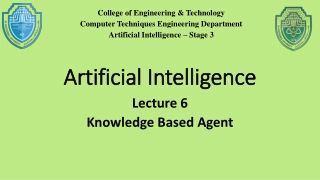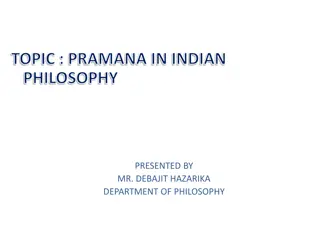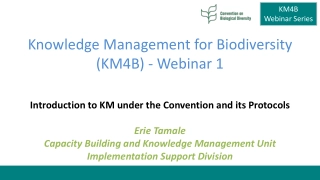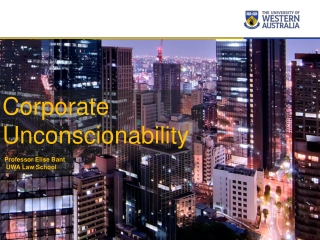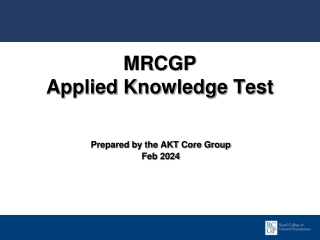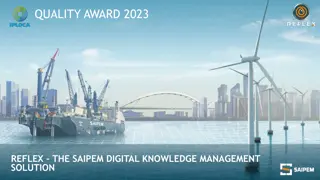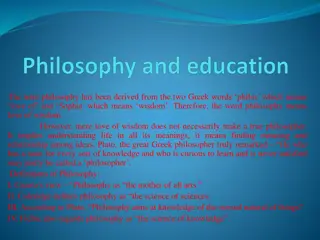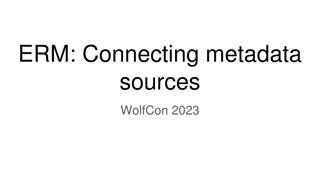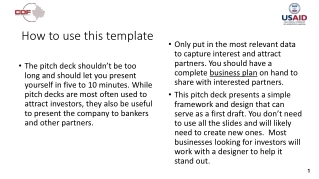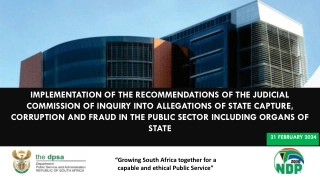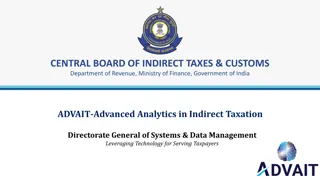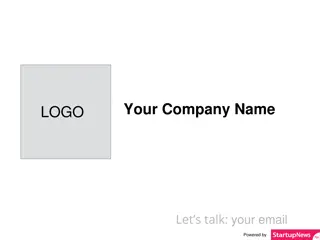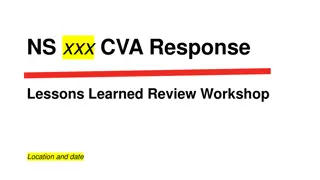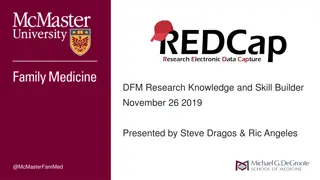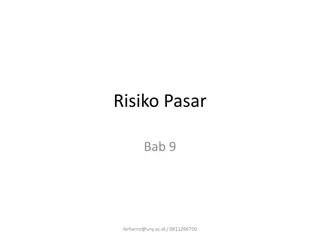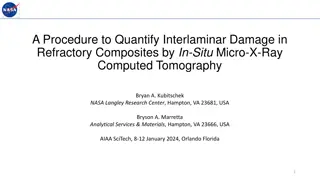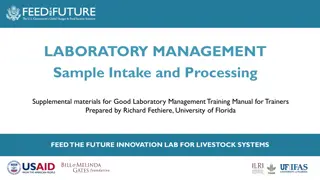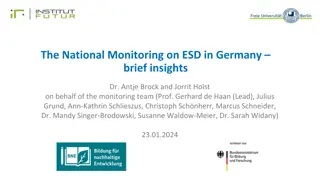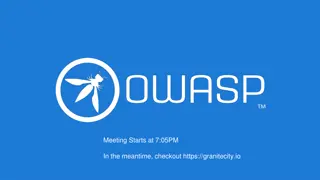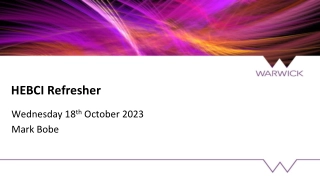Knowledge Capture
Knowledge capture is crucial for organizations to retain valuable expertise and prevent loss of critical knowledge due to employee turnover. Tacit and explicit knowledge play key roles, requiring strategic planning for retention, incentivizing knowledge-sharing culture, and implementing effective strategies to capture and transfer knowledge effectively.
Download Presentation
Please find below an Image/Link to download the presentation.
The content on the website is provided AS IS for your information and personal use only. It may not be sold, licensed, or shared on other websites without obtaining consent from the author. Download presentation by click this link. If you encounter any issues during the download, it is possible that the publisher has removed the file from their server.
Presentation Transcript
Knowledge Capture
Disclaimer This document contains references to good practices and should be interpreted bearing in mind the Environmental and Social Policy adopted by the EBRD; it is not a compliance document. It does not alter or amend EBRD or FMO policies and does not create any new or additional obligations for any person or entity. In case of any inconsistency or conflict between this document and the EBRD Environmental and Social Policy adopted by the EBRD as amended from time to time, such policy shall prevail. Questions of interpretation shall be addressed solely in respect of the EBRD Environmental and Social Policy. The views expressed in this document are derived from reflections and insights developed through desktop research, analysis, interviews with experts and practitioners, as well as the valuable input from a diverse group of stakeholders. It is important to note that these views should not, under any circumstances, be considered as reflective of the official position or views of theEBRDFMO. The information and opinions within this document are for information purposes only. No representation, warranty or undertaking expressed or implied is made in respect of any information contained herein or the completeness, accuracy, or currency of the content herein. The EBRD and FMO do not assume responsibility or liability with respect to the use of or failure to use or reliance on any information, methods, processes, conclusions, or judgments contained herein, and expressly disclaim any responsibility or liability for any loss, cost, or other damages arising from or relating to the use of or reliance on this document. In making this document available, the EBRD and FMO are not suggesting or rendering legal or other professional services for any person or entity. Professional advice of qualified and experienced persons should be sought before acting (or refraining from acting) in accordance with the guidance herein. Certain parts of this document may link to external internet sites and other external internet sites may link to this publication. The EBRD and FMO do not accept responsibility for any of the content on these external internet sites. This document does not constitute or imply a waiver, renunciation or other modification, either express or implied, of any of the privileges, immunities and exemptions granted to the EBRD under the Agreement Establishing the European Bank for Reconstruction and Development, international convention or any applicable law.
Knowledge Capture Any company is vulnerable to a loss of experience when a few key employees or groups of employees retire. The loss of experience is represented by a loss of knowledge to the organisation. In simple terms, there are two forms of knowledge in an organisation: tacit and explicit. Tacit knowledge Tacit knowledge consists of the wisdom that a person gains through their employment from different experiences and observations. It is comprised of expertise (such as from problem-solving), technical awareness, experience and skills. Tacit knowledge is harder to transfer than explicit knowledge. Explicit knowledge Explicit knowledge is information that has been written and recorded. Itis normally embedded in physical formats such as books, written documents, procedures, guides, manuals, memos and held on database systems. Explicit knowledge is relatively easy to transfer. An employee reaches their full potential when their explicit knowledge turns into tacit knowledge. When a group of employees reach retirement age, they will have a significant amount of knowledge that will be lost. Companies need to plan for in advance and put a value on the employees tacit knowledge to retain that knowledge for existing and future staff. Examples of ways of capturing such tacit knowledge are listed below. Knowledge Capture 3
Ref Topic Comments Establish a culture that incentivises knowledge-sharing behaviour. Positively reinforce people who share quality knowledge with others and make employees feel comfortable openly discussing issues and offering advice. Organisational Culture 1 Establish a culture that invests time in reflecting and learning and places a value on the staff s acquisition of knowledge through their own experiences (success or failure). Set up monthly meetings, conferences, presentations, and other one-on-one interviews with key people. Reduce employee turnover rates and retain older employees in some way to preserve the tacit knowledge of the company. Create forums on an internal platform for employees to discuss work problems and processes. Employees can seek and receive work-related advice or documentation to perform better. Forums and Informal Groups 2 Such forums need to be informal groups where employees interact and engage in a collective learning process. They may be from different departments holding different positions as well. Employees socializing during snack breaks or after work at casual outings etc., are part of the process; and as part of the company culture, such informal groups need to thrive. Such groups can enable a lot of tacit knowledge transfer among their members. Encourage senior employees to train juniors. Have junior employees shadow seniors and participate in informal discussions with their superiors. Invite experts to talk about concepts and share their real-life experiences with company employees. Assign a mentor for every new employee who may not necessarily belong to the same department. This mentor can guide the recruit on how to handle work at the organisation. This helps the new employee to align themselves with the company s culture, organisational goals and deliver work as per the company s expectations. Mentorship programmes 3 Whether the organisation has a flat or hierarchical structure, encouraging teamwork and workplace collaboration helps in effective knowledge sharing and management. Workplace Collaboration 4 Social platforms such as WhatsApp help record informal discussions at workplaces and are quick and simple to use. However, thought needs to be given to capturing the message threads. Encourage employees to contribute to public platforms (such as conferences, networking opportunities, etc) for sharing their tacit knowledge. Knowledge Capture 4
Ref Topic Comments Use technology, information and document management systems to store knowledge in a very simple structured manner for easy access. User guides, manuals, instruction books, presentations, policies and tutorials help. However, these need constant encouragement; if employees do not question the existing processes periodically, there is little scope for growth. Documentation 5 Employees can also be encouraged to produce case studies and reviews of previous projects to capture tacit knowledge effectively. Since tacit knowledge is mostly practical, employee training becomes important in knowledge sharing and management. Practical learning can include on-the-job training, demonstrations, and simulations. Employees can see how a job is done and perform it themselves. Workshops, events, conferences, and meetings help employees understand how to approach an issue with different perspectives. Training 6 When a new project starts, many organisations conduct meetings to brief employees about its objectives and deliverables. Companies also conduct discussion groups for employees to pitch ideas for projects. However, very few organisations conduct debriefing meetings to understand what went right and what went wrong in the project after its completion. Some organisations conduct Root Cause Analysis meetings only when a costly error occurs in the project. Conducting analysis meetings before and after projects helps employees to gather best practices and learn from each other the lessons and how to manage failures. Meetings 7 Big organisations can arrange to use their own networking IT system to have employees share their knowledge in an exclusive tacit knowledge sharing platform. Each employee has a profile that explains what their role is in the organisation. Every employee can share their own work experiences or knowledge as status updates, articles or share information from external websites for other employees. In this way, the company can build a directory of helpful people within the organisation. Professional and Social Networks 8 Organisations can create email distribution lists where employees can share relevant and current information about their specialisms. Periodically, employees could take turns to send an email explaining a concept, a process or even a unique set of circumstances encountered with a project in the organisation. Knowledge Capture 5




